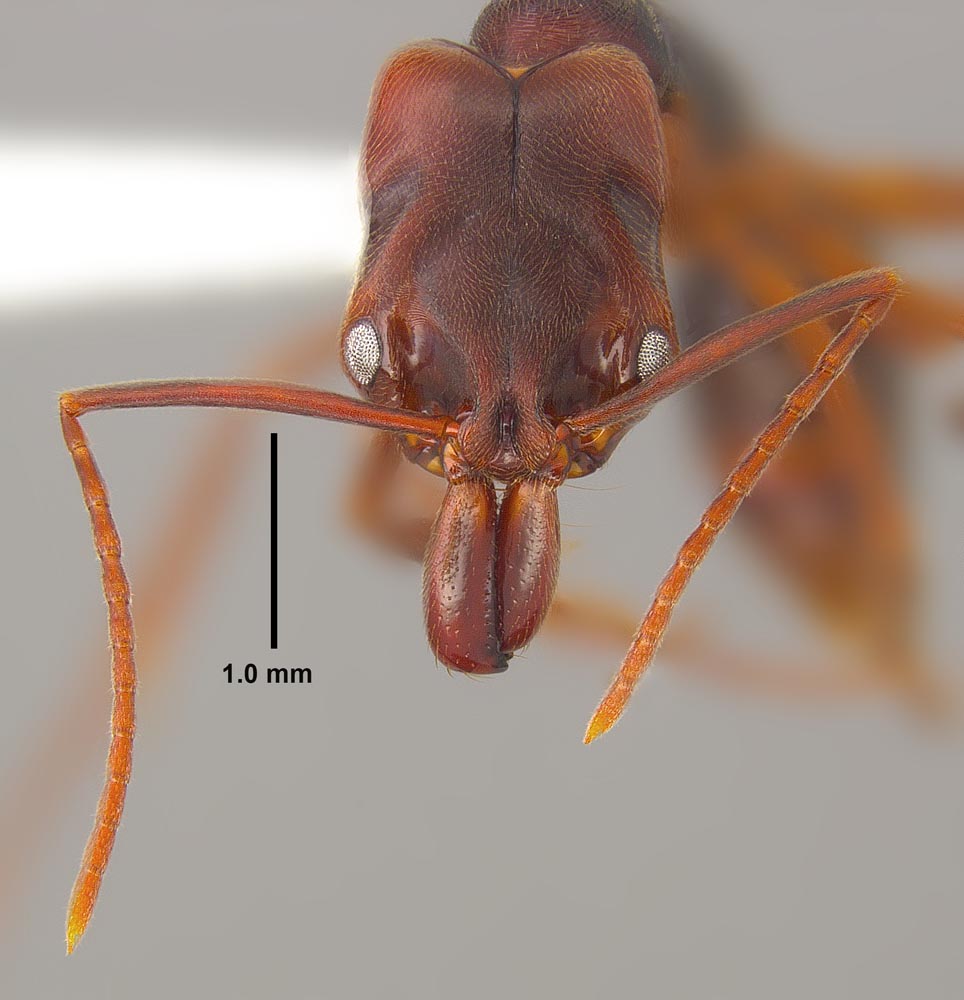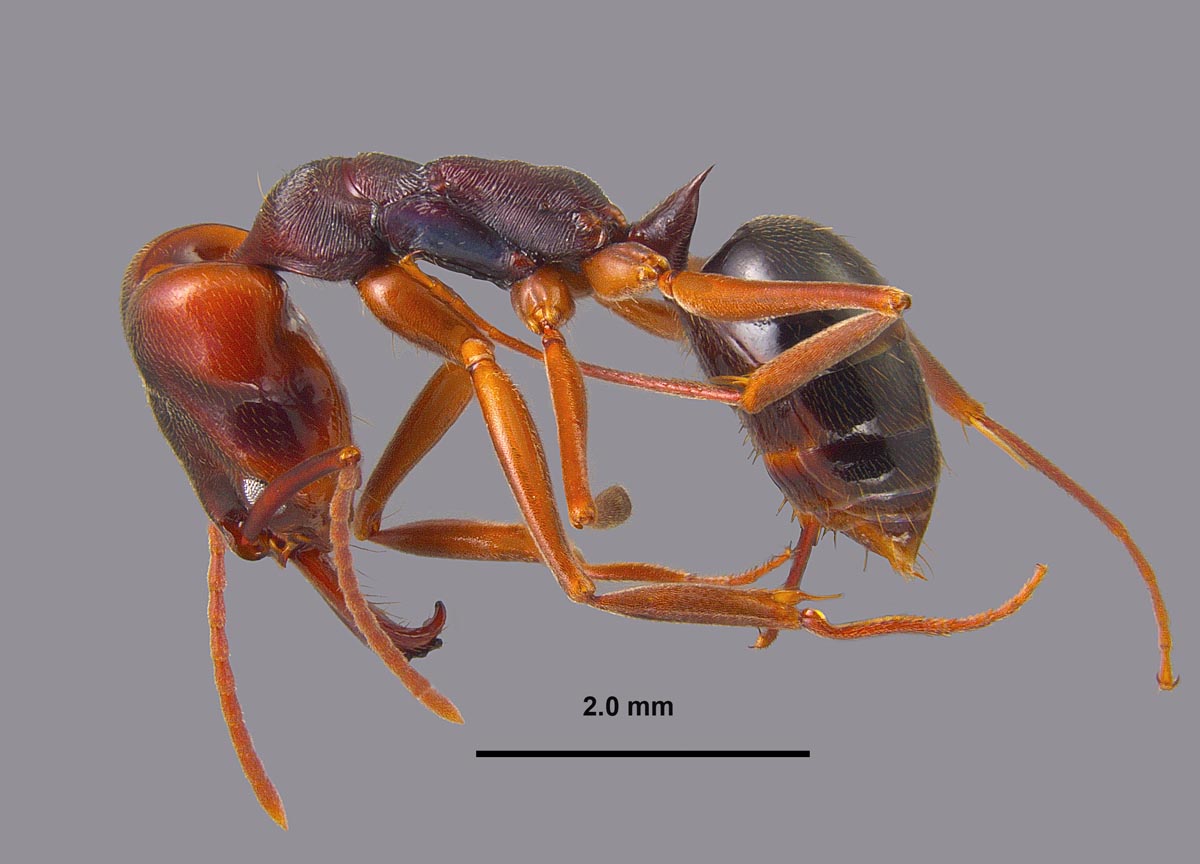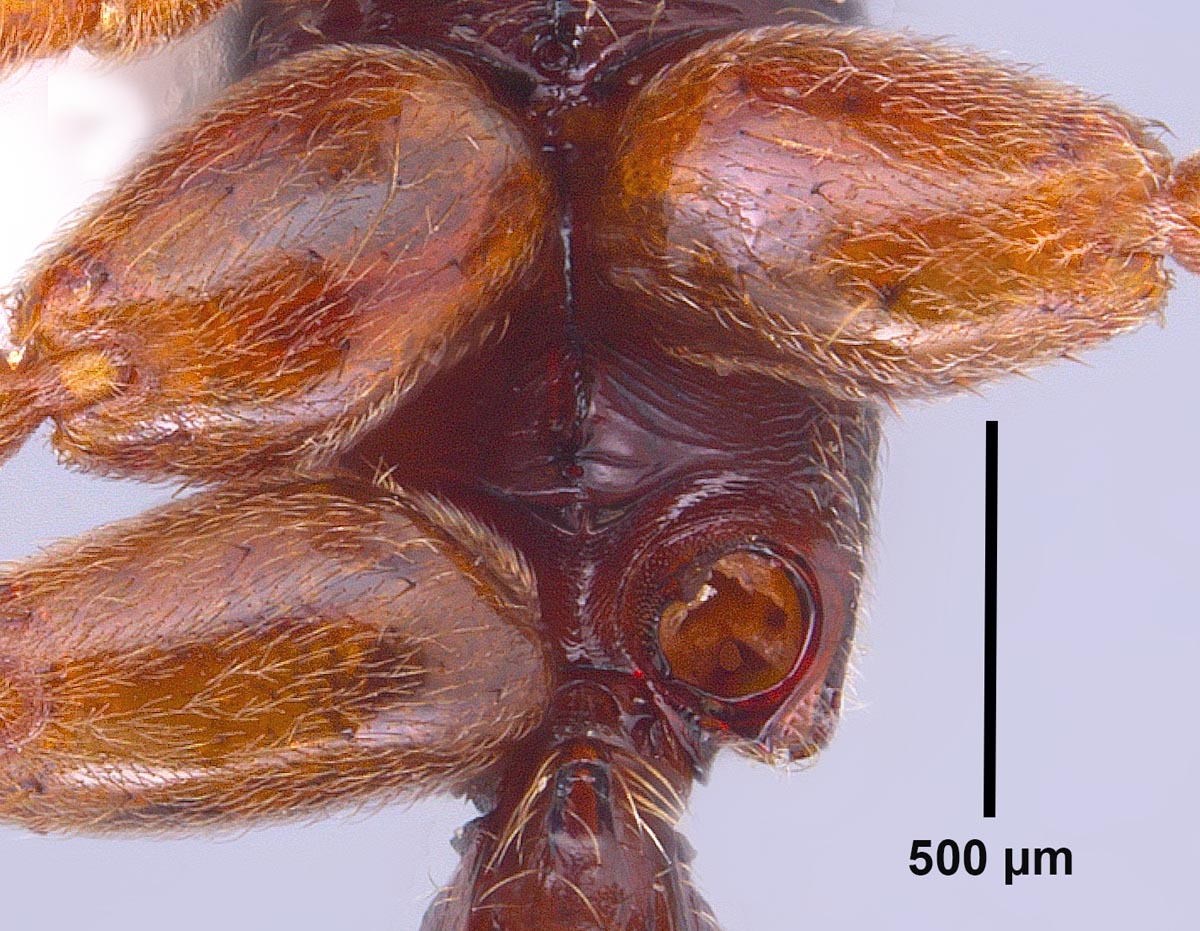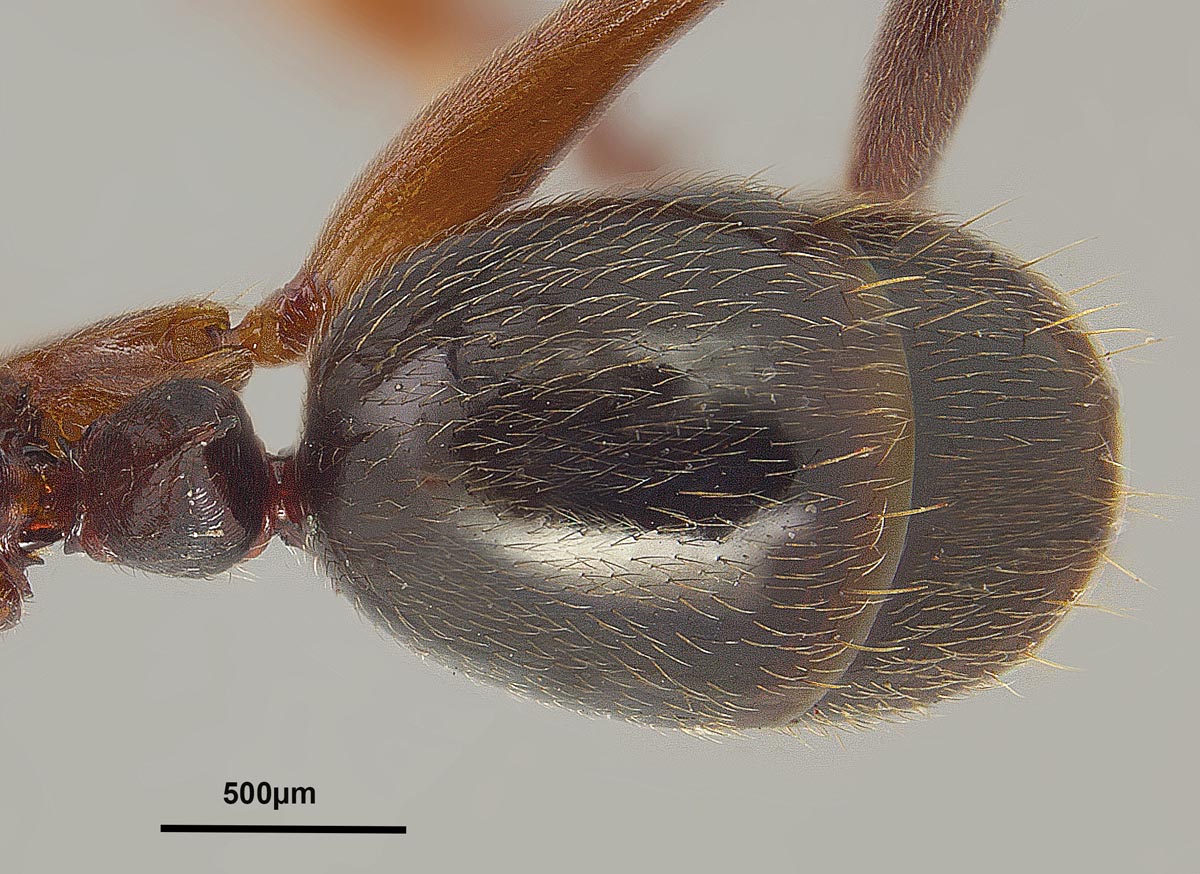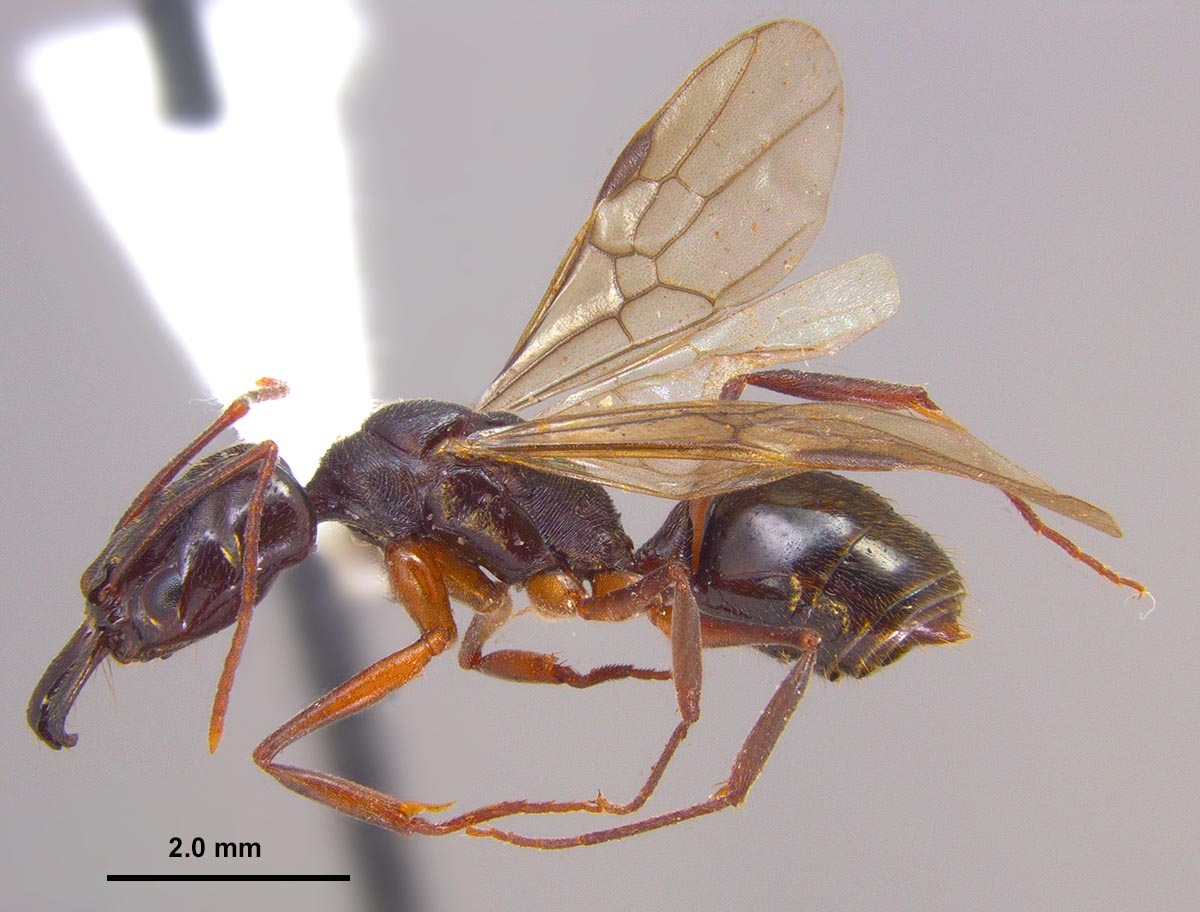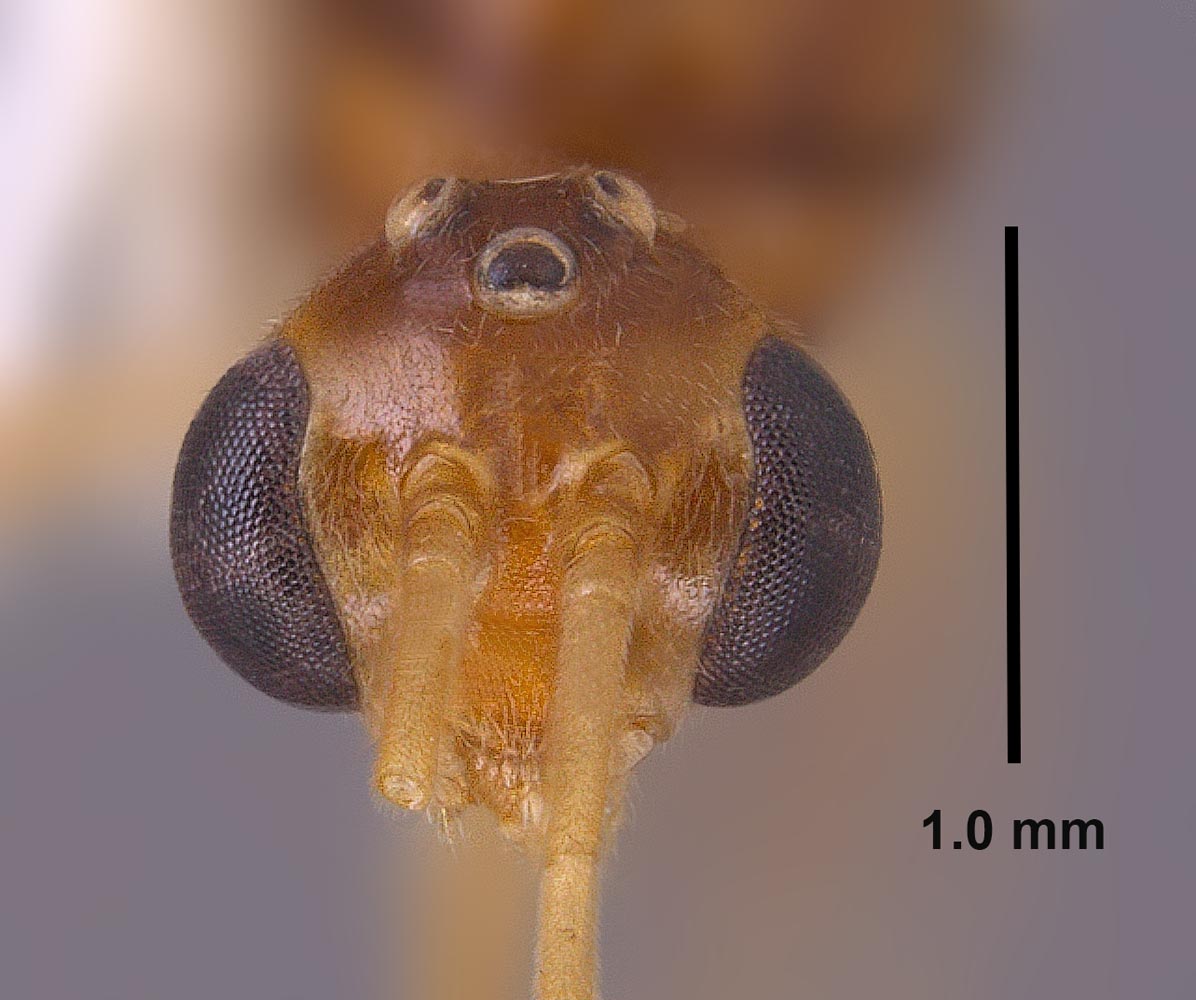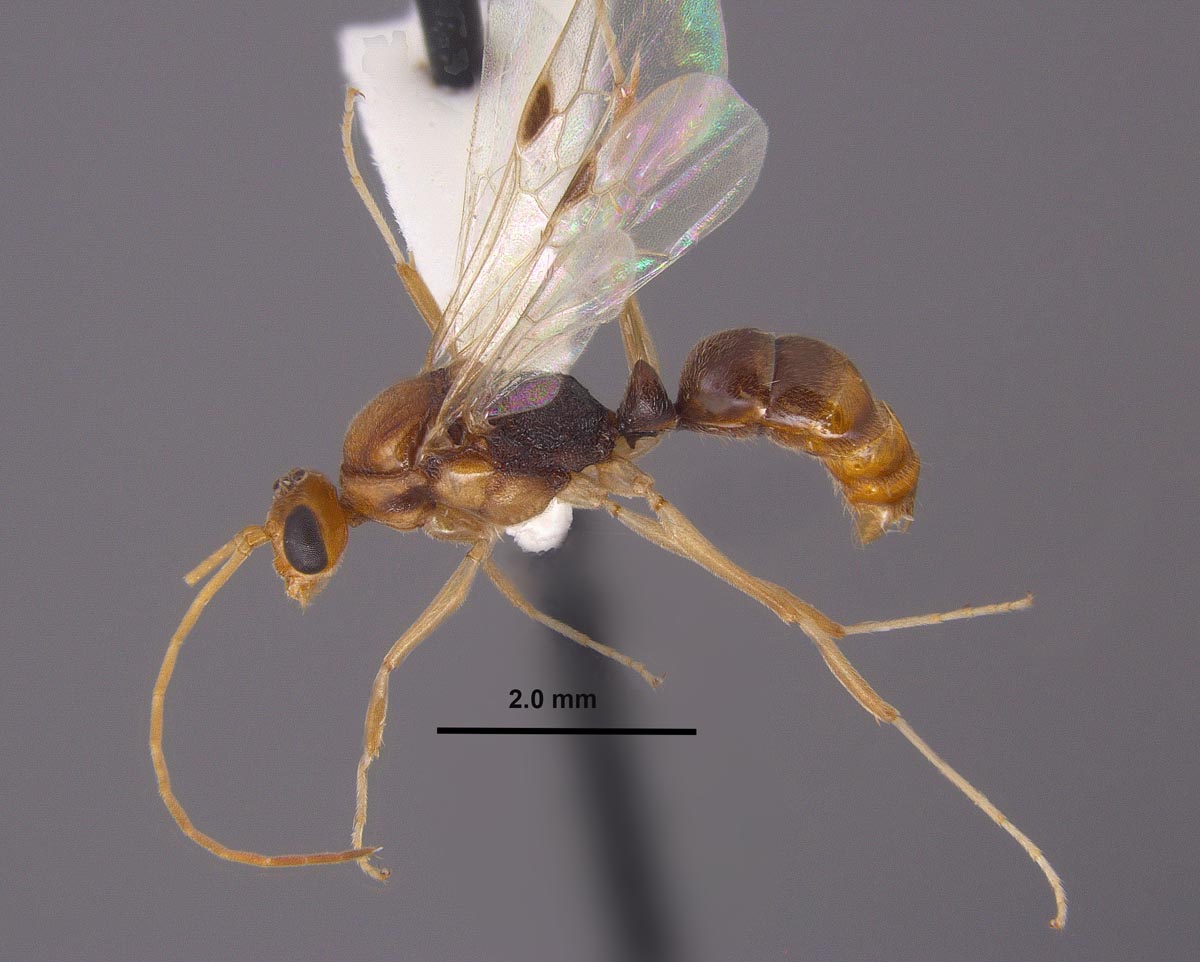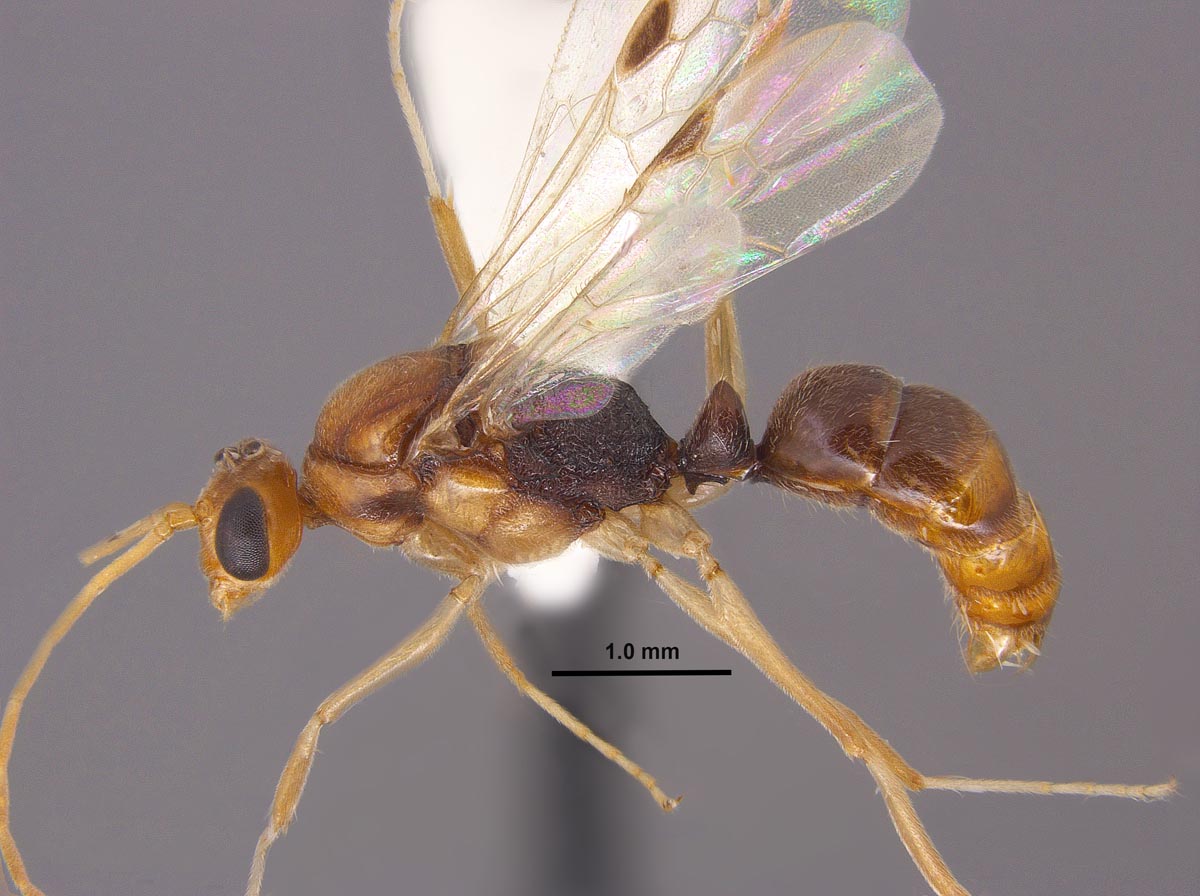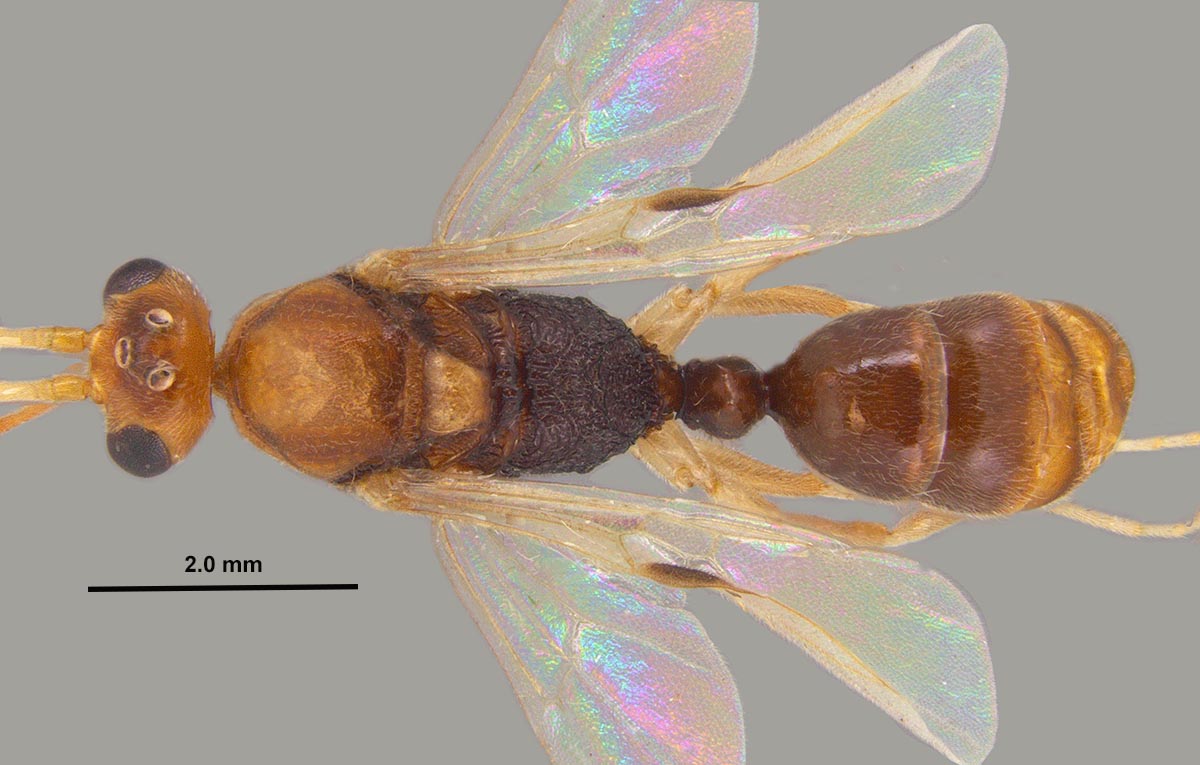Introduction
Ants in this genus differ from other ponerine ants found in the United States by the unique head shape; peculiar mandibles, which are elongate and inserted near the center of the clypeus; the large tapering petiole; and the large size of the workers (see photos above) (for a more detailed diagnosis of the genus, see MacGown et al. 2014). Members of this genus are commonly called trap-jaw ants due to their elongate mandibles, which can be opened to 180°, then snapped rapidly together on prey. These ants are amazing in their ability to control and time the mandibular movement. When necessary, an ant can forcibly close the mandibles against a surface or other organism and actually propel itself away for up to several inches! Remarkable behavior. Additionally, they can use the mandibles for much more sensitive movements such as caring for larvae or nest building
Odontomachus ruginodis is an exotic speceis possibly native to the Caribbean region that occurs in the southern half of Florida.
Taxonomic History (from Barry Bolton, 2012)
Described as Odontomachus haematodus var. ruginodis Smith, 1937; raised to species by Wilson (1964); treated as a junior synonym of O. brunneus by Brown (1976); and revived from synonymy by Deyrup et al. 1985.
Identification
Worker: HL 2.00–2.18, HW 1.58–1.76, SL 1.78–1.90, EL 0.33–0.38, ML 1.16–1.20, WL 2.50–2.60, PTH 0.88–1.04, PTL 0.44–0.46 (n=5). Entire body generally shiny except where dulled by dense pubescence; head including mandibles and antennae and legs orangish-brown to reddish-brown, mesosoma and waist darker reddish-brown, and gaster brownish-black. Head with fine, longitudinal striae covering much of the head in full-face view, striae beginning from frontal lobes and diverging toward posterior corners of head, fading at corners and sides; sides and underside of head lacking sculpture; with numerous, fine, appressed pubescence and scattered elongate, erect setae present dorsally. Pronotum with somewhat circular concentric striae that become transverse near rear margin; appressed pubescence abundant; 6–10 elongate, erect setae present. Mesonotum and propodeum with deep transverse striae; propleuron, mesopleuron, and basalar lobe lacking sculpture; abundant pubescence present dorsally. Metasternum with ridge that can be bilobed or cleft, but lobes not extending out as elongate, spiniform processes (Fig. 3B). Petiole widest at base, gradually tapering apically to a short spine directed rearward; with transverse striae present and obvious of all surfaces; subpetiolar process somewhat anvil shaped; appressed pubescence present anteriorly and laterally, but mostly absent posteriorly. Gaster mostly shiny beneath pubescence, lacking striae or other strong sculpture, but with fine coriaceous sculpture (seen at high magnification); slightly coarse, appressed pubescence somewhat sparse, spaces between hairs more than 1/2 the length of a single hair; scattered erect, elongate setae present.
Male: HL 0.88–0.96, HW 1.10–1.20, SL 0.15–0.18, EL 0.58–0.64, EW 0.32–0.38, OL 0.15–0.18, OES 0.22–0.23, WL 2.28–2.50, PTH 0.72–0.76, PTL 0.42–0.48;, FWL 4.08–4.60 (n=5). Head, mesosoma, and petiole generally shiny except where obscured by dense pubescence; head and mesosoma yellowish-brown with a darker brown infuscation on pronotum, propodeum dark brown, gaster yellowish-brown to darker brown, antennae and legs pale yellowish-brown. Head, meso- and metasoma with abundant fine, white pubescence except on anepisternum where pubescence is mostly absent. Eyes relatively large, maximum diameter of each eye 50–60% of the length of the head in full-face view. Ocelli relatively small, length of each ocellus less than distance between lateral ocellus and eye margin; in full-face view, lateral ocelli only protrude slightly beyond posterior border of head. Mesosoma: pronotum lacking sculpture; mesoscutum feebly shining, lacking obvious sculpture; mesoscutellum raised and rounded, with longitudinal striae; propodeum with distinct declivious face in profile, strongly rugoreticulate; mesopleuron mostly lacking striae. Petiole bluntly rounded apically, with triangular subpetiolar process anteriorly; densely pubescent anteriorly and laterally, but reduced pubescence posteriorly.
Queen: HL 2.18–2.20, HW 1.82–1.88, SL 1.90–2.02, EL 0.40–0.46, ML 1.10–1.30, OL 0.12, WL, 2.94–3.06, PTH 1.14–1.24, PTL 0.52–0.56, FWL 6.00–6.25 (n=2). Similar to workers in color and general appearance except slightly larger, alate, and with mesosoma developed for wings.
Biology and Economic Importance
Similar to other members of this subfamily, Odontomachus workers have a prominent sting(er), and have the ability to inflict a relatively painful sting. The status of Odontomachus ruginodis as an exotic species is unclear. The Florida populations may be recent arrivals from Antillean populations, as evidenced by the frequent collection in disturbed areas, such as near homes, rather than in natural habitats. Indeed, Puerto Rican populations of O. ruginodis show a preference for forests that are at least 25 years old (Osorio-Pérez et al. 2007), and males of Nearctic O. ruginodis more-closely resemble those of the Antilles rather than of the mainland Neotropics. During the past 20 years, this species appears to have been steadily expanding its range northward in Florida. Males have been collected from early May through June.
Distribution
West Indies, USA (southern Florida), Costa Rica. Costa Rica: coastal lowlands of the Atlantic coast and Osa Peninsula; La Selva; Hitoy Cerere (100m) (from AntWeb). According to Mark Deyrup (pers. com), this species is confined to the US to central and south Florida (Brevard, Broward, Charlotte, Collier, Dade, Glades, Hendrey, Highlands, Hillsborough, Indian River, Lee, Manatee, Martin, Monroe, Orange, Polk, Sarasoto, St. Lucie, and Volusia Counties).
Literature Cited
Bolton, B. 2012. Bolton World Catalog Ants. accessed on October 2012. [Available online: http://www.antweb.org/world.jsp]
Brown, W. L., Jr. 1976. Contributions toward a reclassification of the Formicidae. Part VI. Ponerinae, tribe Ponerini, subtribe Odontomachiti. Section A. Introduction, subtribal characters. Genus Odontomachus. Studia Entomol. 19:67-171.
Deyrup, M. and S. Cover. 2004. A new species of Odontomachus ant (Hymenoptera: Formicidae) from inland ridges of Florida, with a key to Odontomachus of the United States. Florida Entomologist 87: 136-144.
Deyrup, M., J. Trager, N. Carlin 1985. The genus Odontomachus in the southeastern United States (Hymenoptera: Formicidae). Entomological News 96:188-195.
MacGown, J. A., B. Boudinot, M. Deyrup, and D. M. Sorger. 2014. A review of the Nearctic Odontomachus (Hymenoptera: Formicidae: Ponerinae) with a treatment of the males. Zootaxa 3802 (4):515–552.
Smith, M. R. 1937(1936). The ants of Puerto Rico. Journal of Agriculture of the University of Puerto Rico 20:819-875.
Links
AntWeb
AntCat
AntWiki
